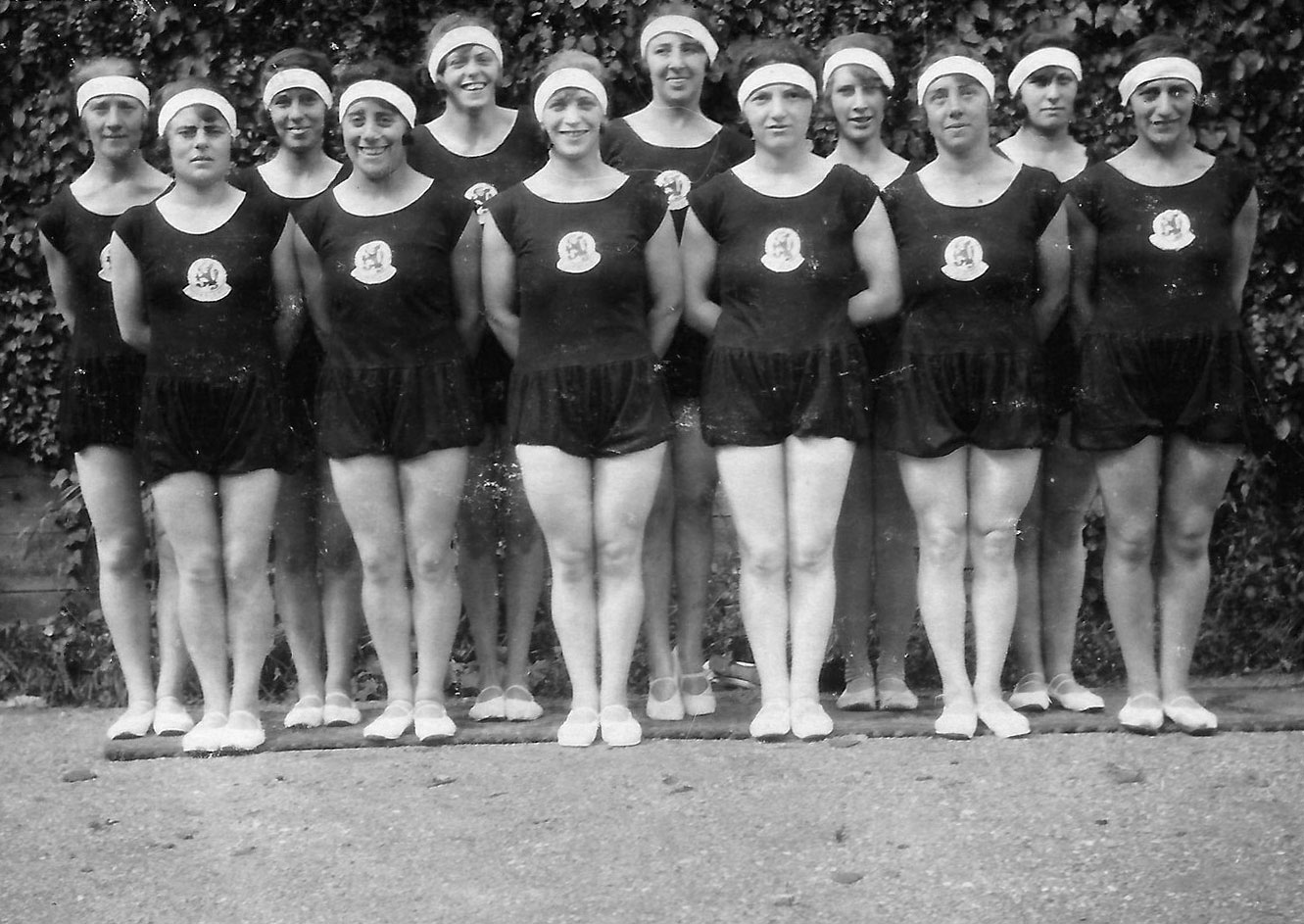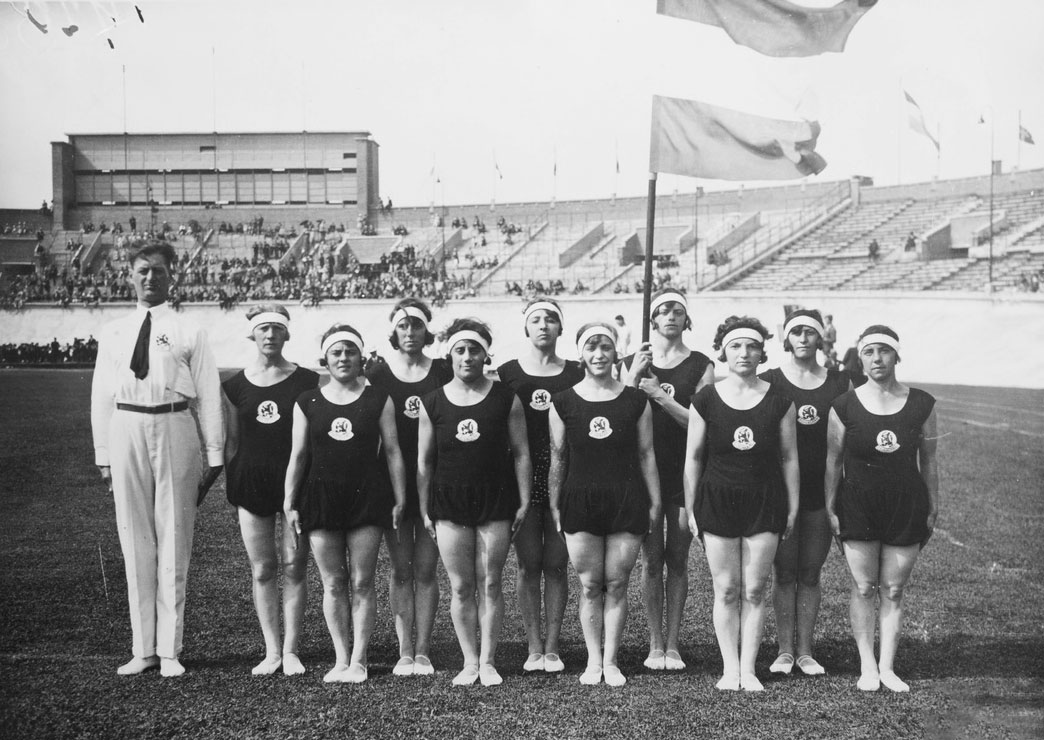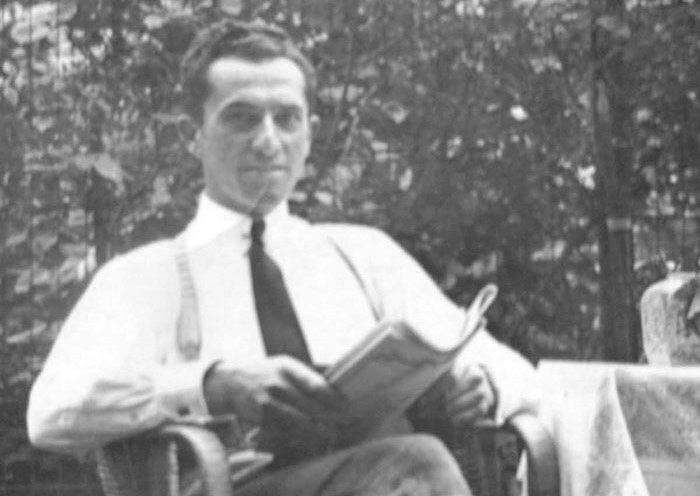Olympic Gymnasts Murdered in the Holocaust
In 1928, the Netherlands hosted the Olympic Games in Amsterdam. This was the first time that women were competing in the field of gymnastics. Five women on the Dutch Olympic gymnastics team were Jewish: Helena-Lea Nordheim, Ans Polak, Estella-Stella Agsteribbe, Judikje-Judik Simons and Elka de Levie. The team's trainer, Gerrit Kleerekoper, was also Jewish. The team won the gold medal for women's gymnastics at the Amsterdam Olympics, and the women became national heroines.

The Jewish team members are standing on the first row: From left: Helena-Lea Nordheim (second), Anna Polak (third), Estella Agsteribbe (fourth), Judik Simons (last) and Elka de Levie (second row, first from right).
Helena, Anna, Estella and Judik were murdered in the Holocaust. Elka survived.

Front row, from left: W.E. Zandvliet, Nel van Randwijk, Lea Nordheim, Ans Polak, Stella Agsteribbe, Riek van Rumt.
Back row, from left: Alie van der Bos, unknown, unknown, unknown, Elka de Levie.
Five of the women on the team were Jewish – Nordheim, Polak, Agsteribbe, de Levie and Judik Simons (who doesn't appear in the photo). Nordheim, Polak, Agsteribbe and Simons were murdered in the Holocaust. De Levi survived.

Kleerekoper was murdered on 2 July 1943 at Sobibor.
Press cuttings from the Amsterdam Olympic Games lauded the women's performance:
Everything was taken care of down to the last detail. Nice practice material - not too heavy - logically composed, neatly executed in class, wonderful order and leadership, in one word sublime. …The jury was also enthusiastic and awarded the Kleerekoper corps a total score of 316.75 points, leaving the other teams far behind. With their well-deserved success the gymnasts were the first female Olympic champions in the Netherlands. At a quarter past five, the Dutch flag fluttered above the Olympic Stadium and the National Anthem sounded over the central area. However, the cheers rose when HRH Prince Hendrik stepped forward and shook hands with each of the participants. …and then they, our ladies, to whom we owe the first victory, disappeared under the grandstand to their dressing rooms.
In May 1940, the Germans occupied the Netherlands. Leah, Estella and Elka trained at the "Bato" sports club in Amsterdam, which had been established in 1902 and was one of the largest Jewish sports clubs in the city. In September 1941, the Germans banned Jews from all sports activities, but even after the club's closure, Jews continued to train and exercise illegally until 1942. From the summer of 1942, Dutch Jews were deported to the East under the ruse that they were being sent to labor camps. Among the deportees were four of the women from the gymnastics team that represented the Netherlands at the Amsterdam Olympics, and their trainer. The women were already in their thirties, married with children.
Judik Simons married Bernard Solomon Themans in 1935, and they had two children, Sonja (b. 1937) and Leon (b. 1940). They lived in Utrecht, where they ran the Jewish community orphanage. In the war period, they moved to Amsterdam together with the children and staff. Although they were warned that they were about to be arrested, they stayed at the orphanage, knowing that they couldn't abandon the children. In early February 1943, they were arrested and incarcerated in the Westerbork concentration camp in the Netherlands. On 17 March 1943, a deportation train left Westerbork, and arrived at the Sobibor extermination camp three days later. Among the deportees were Judik Themans, her husband Bernard and their children, five-year-old Sonja and three-year-old Leon. As well as Judik and Bernard, all the children and staff from the orphanage were deported, including 30 children who had arrived from Germany. They were all murdered. Only one person survived this deportation. Of the 34,000 Jews deported from the Netherlands to Sobibor during the spring of 1943, just 19 survived.
Helena Nordheim married Abraham Kloot, and their daughter Rebecca was born in 1933. Lea and Abraham were both hairdressers. In 1943, they were arrested and sent to Westerbork. On 29 June 1943, a deportation train left Westerbork, arriving at Sobibor three days later. The deportees included Helena Kloot, her husband and their ten-year-old daughter, and Gerrit Kleerekoper, his wife Kaatje and their 14-year-old daughter Elizabeth. They were all murdered. There were no survivors from this deportation. Gerrit and Kaatje's son Leendert was murdered in November 1944 at Auschwitz.
In 1936, Anna-Ans Polak married Barend Dresden, a tailor, and in 1937 their only daughter Eva was born in Amsterdam. In May 1943, the family was arrested and sent to the Vught concentration camp in the Netherlands. Approximately one month later, Anna and Eva were transferred to Westerbork. On 20 July 1943, a deportation train left Westerbork, arriving at Sobibor three days later. Among the deportees were Anna Dresden and her six-year-old daughter Eva. They were both murdered. There were no survivors from this deportation. Anna's husband Barend was deported from Vught to Auschwitz on 15 December 1943. He survived the selection, and was sent to forced labor in Auschwitz III: Buna-Monowitz. On 30 November 1944, Barend was murdered at Auschwitz.
Estella Agsteribbe married Shmuel Blits, who exercised with her at the "Bato" sports club in Amsterdam. Shmuel made a living as a diamond cutter. In late July 1943, they were arrested in Amsterdam and incarcerated at Vught. Some five weeks later they were transferred to Westerbork. On 14 September 1943, a deportation train left Westerbork and arrived at Auschwitz two days later. The deportees included Estella Blits, her husband Shmuel, their six-year-old daughter Nanny and their two-year-old son Alfred. Estella and the children were murdered on arrival. Shmuel passed the selection, but was murdered in April 1944. A rare piece of video footage survived, featuring Estella performing a routine on the parallel bars at a competition that took place in Amsterdam in 1932. The footage forms part of this exhibition.
Elka de Levie managed to evade the tragic fate of her fellow Jewish teammates, and survived in the Netherlands. She passed away in Amsterdam in 1979.
